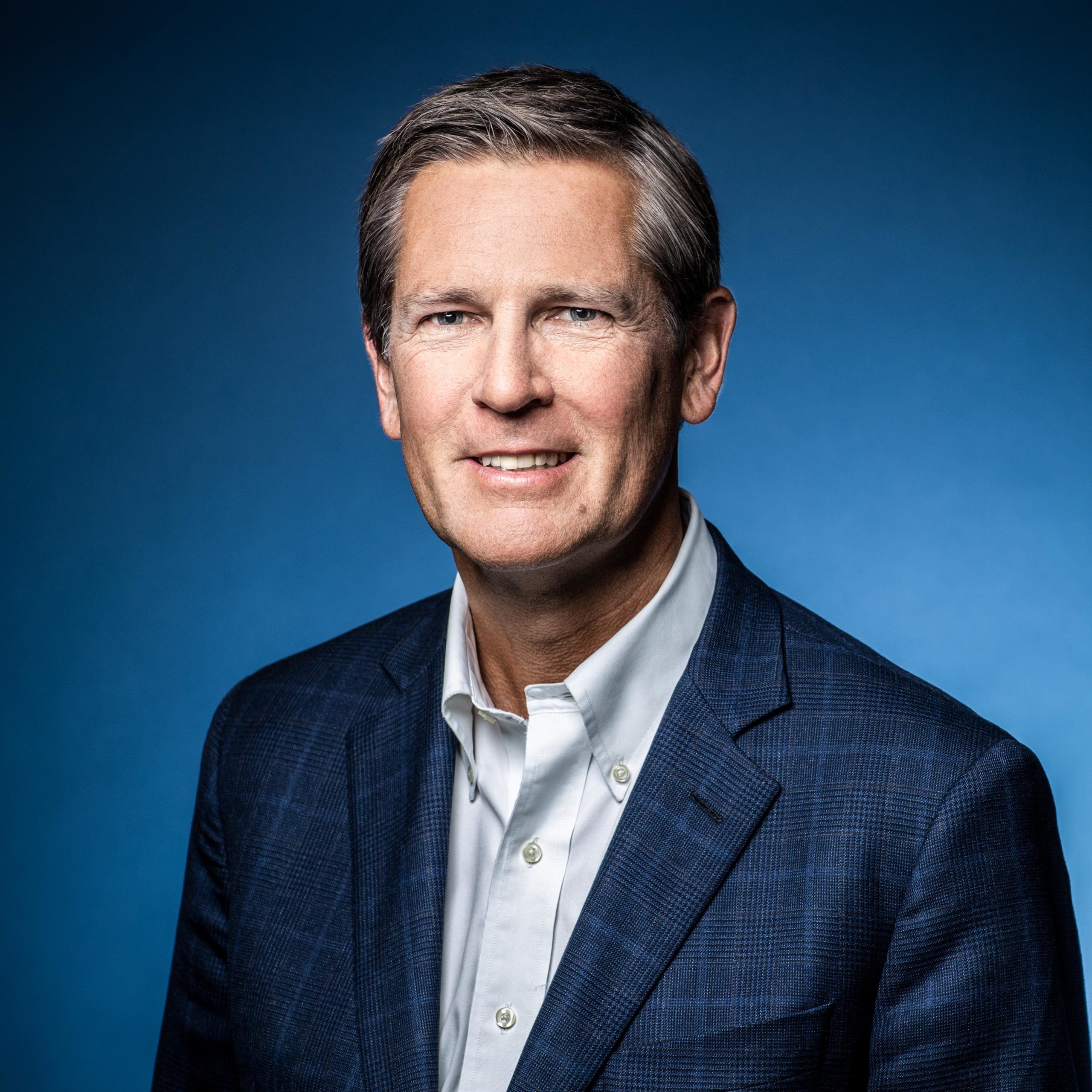- Resources
- How an Indonesian coconut plantation inspired Mars’ “aha moment” on sustainability
Resources
How an Indonesian coconut plantation inspired Mars’ “aha moment” on sustainability
Published: May 22, 2018 by Tom Murray
At Environmental Defense Fund, we believe that environmental progress and economic growth can and must go hand in hand. EDF+Business works with leading companies and investors to raise the bar for corporate sustainability leadership by setting aggressive, science-based goals; collaborating for scale across industries and global supply chains; publicly supporting smart environmental safeguards; and, accelerating environmental innovation.
This is the seventh in a series of interviews exploring trends in sustainability leadership as part of our effort to pave the way to a thriving economy and a healthy environment.
You likely know Mars as the company behind leading brands like M&M’s®, PEDIGREE® pet food, and UNCLE BEN’S® rice. For those of us in the field of corporate social responsibility, Mars is also well-known for its environmental leadership.
Mars’ Sustainable in a Generation plan lays out the company’s commitment to procure 100 percent renewable energy, reduce 100 percent of greenhouse gas emissions from its direct operations by 2040, and reduce indirect emissions throughout the value chain by one-third by 2030 and two-thirds by 2050.
As Mars’ chairman Stephen Badger wrote in a Washington Post editorial last year, the company’s carbon footprint is the size of a small country. The company’s goals are therefore nothing short of ambitious.
But if anyone can help the company meet those targets, it is chief procurement and sustainability officer Barry Parkin, who believes that big goals drive big innovation.
I recently spoke with Barry about how Mars plans to tackle its climate goals, how being a family-owned business shapes its approach to sustainability, and how his time on the British Olympic sailing team influences his day-to-day job. Here’s an edited transcript of our conversation.
You started at Mars in 1985, first as an engineer and then you worked in business development, operations, human resources, and procurement. How did you make your way into sustainability?

I certainly didn’t have sustainability on my mind when I first joined Mars, but it was through my role in procurement that I really became interested in the environment and the people in our extended value chain. That’s because in the early part of my career, we were buying raw materials and packaging from all over the world, and frankly we didn’t know where many of these materials came from.
It was a visit to a coconut supplier in Indonesia that really brought it home for me. You can only get to this one particular coconut plantation by boat, as there’s no road access so I went in not expecting much but was blown away when I got there and saw the scale of this plantation it was 100 kilometers by 100 kilometers, with multiple factories on-site to process the coconut, and thousands upon thousands of workers.
As I toured the plantation, I learned that we were their biggest customer it’s a relatively small ingredient for us, but it affects a massive amount of people and land.
That’s when the complexity and enormous reach of our supply chain really struck me and when I suddenly got a sense of our impact on the planet. I immediately became intrigued, and then slightly overwhelmed, with the sustainability challenges we faced.
Wow, sounds like a powerful and eye-opening experience and we’re increasingly seeing leading companies connect procurement and sustainability roles, as the two really go hand-in-hand. Can you tell me about the process of setting your science-based targets?
We started, like most companies do, focusing on our own operations. We knew the first few years of the sustainability journey would involve efficiencies in our plants, and investments in renewable energy. The problem was, we hadn’t built our factories in the sunniest or the windiest places in the world, so on-site renewable energy wasn’t going to be enough to move the needle on our goals.
That’s why we developed a big, off-site renewable energy program, where we now have projects and agreements in eleven countries that allow us to use 100 percent renewable electricity in our direct operations. That helped us meet a goal of reducing emissions by 25 percent by 2015.
Once we really understood our supply chain, we realized that our own operations were only six percent of the entire footprint of our impact. The majority of our carbon impact was either in agriculture with our suppliers upstream or land use. So, last year we set our Scope 3 emissions target for the entire supply chain, from farmers through to the end product.
We believe science-based targets are imperative for business to move beyond incremental improvements and actually advance the change that is needed to operate within planetary boundaries.
What are some of the key ingredients (pun intended) for success in meeting your targets?
We’re going to need some breakthroughs in technology and new partnerships, as well as new ways of thinking to get to our 2050 target. We can only limit the warming of the planet to no more than two degrees if everybody gets on board. This starts by doing your part, and then partnering with others to find solutions.
Truly collaborating with industry peers and governments is also an absolute necessity. You can’t make chocolate without cocoa, but there are many sustainability issues to consider with chocolate. That’s why together with a group of chocolate and cocoa companies and the World Cocoa Foundation, we created a coalition to focus on what it would take to grow cocoa in a sustainable way. Then, when the issue of deforestation in West Africa really heated up a few years ago, the coalition was able to quickly align on and engage with the key West African governments to build a public-private partnership where we laid out clear roles for industry and for government to protect forests.
I’ve heard you comment that “doing good leads to doing well.” Can you unpack that phrase in the context of your sustainability initiatives?
“Doing good” means doing good with and for others, and “doing well” means being successful as a company. The origin of that thought within Mars goes back to 1947, when Forrest Mars, Sr. wrote a letter to all employees, noting that the purpose of the company was to create a mutuality of services and benefits with all stakeholders including suppliers and customers over the long term. It was a thought that was very much ahead of its time.
Today it continues to be our underpinning belief and we can only be successful if the farmers at the start of our supply chain are also successful. Similarly, we can only be successful in the long term if we’re operating in harmony with the planet.
I get the sense that your sustainability efforts are sometimes discounted because, as a private company, you have the freedom to implement environmental initiatives without being subject to pressure to deliver quarterly returns. What would you say to critics who might dismiss your environmental efforts because Mars is privately held?
For us, it’s all about time scales. We think in “quarters of a century” not “quarters of a year.” That’s why our Sustainable in a Generation plan has science-based targets that go out to 2050. Our long-term thinking means we’re expected to pay dividends over a longer period, which is an advantage.
When you look at the return on investments of many sustainability initiatives, they’re in the five to 15-year return period. So if you only care about the next 3-5 years, you wouldn’t make those investments because you’re just not going to see a return in that short period of time.
But we like many other businesses have a demanding set of owners and board members who want to see a strong ROI. I spent an entire year building the business case for our significant step up in sustainability investments. So, there’s no free pass in any company, as we all have to achieve strong returns in order to be able to be successful and invest in innovation and growth at the same time.
The key differentiator perhaps is that we fundamentally believe by taking a longer-term view, we will achieve higher financial returns.
You recently submitted public comments in support of the Clean Power Plan. What drives your decision to weigh in on climate policies?
Whether we’re working with the government of Cote d’Ivoire, Indonesia, Brazil, or the U.S., we’re trying to get everybody to play their role because climate change is a crucial issue for mankind and for all businesses. I think we have to advocate for appropriate policies that will enable the transition to a low-carbon economy, which is also a thriving economy.
In the U.S., this means supporting the Clean Power Plan. There are more clean energy jobs being created than fossil fuel jobs. Plus, in every renewable energy deal we’ve done so far, we have saved money. We need policies that support a rapid transition to clean energy.
A new EDF innovation report showcases how innovative technologies are driving both business and environmental improvements. What role do emerging technologies play in your sustainability strategy?
The rapid developments in plant sciences and biotechnology are incredible, and are helping to create more disease resistance and more climate-friendly and adaptable crops to improve nutrition.
In terms of changing farming practices, there’s still a long way to go to move to more mechanized and automated farming in the developed world, but I’m excited about the role technology can play in things like measuring soil quality and carbon from satellite data. We’re also beginning to test things like blockchain which has enormous potential to improve transparency and efficiency in agricultural supply chains.
You’re a former member of the British Olympic sailing team. How often do you get out on the water these days, and do any lessons learned from sailing apply to your role as a sustainability advocate?
These days, I’m mostly coaching or watching kids as opposed to racing myself. But competition definitely helps you learn about setting goals and staying focused, which is pretty important in the sustainability world.
Follow Tom on Twitter, @tpmurray

